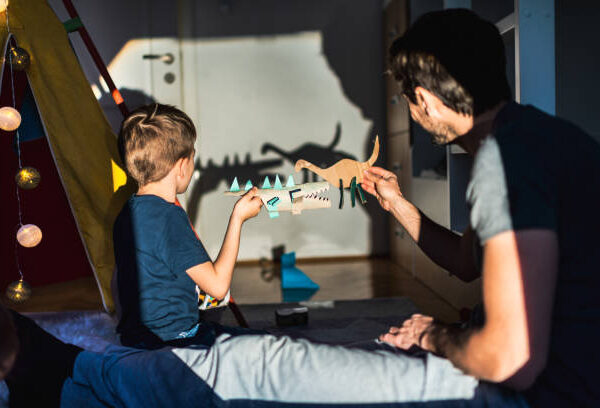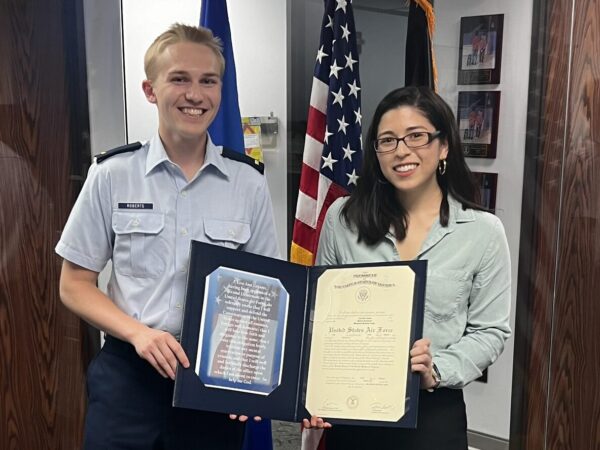
Better Living through Research
According to the Administration on Aging, Us Bureau of the Census, from 1946 through 1964, 78 million children were born in the United states. This baby boomer generation makes up almost 27 percent of the population today. By 2030, nearly 20 percent of adults living in the U.s. will be 64 years or older, and the number of people ages 85 or older will increase to 6.6 million.
The good news is that ‘boomers’ can expect to live longer than previous generations. The bad news is they also have higher rates of chronic disease, more disability and poorer health than previous generations of the same age. As this generation ages, it is likely to join the ranks of older adults who live with chronic disease.
In fact, about 85 percent of elderly Americans have at least one chronic disease, such as diabetes or cardiovascular disease.
While aging is inevitable, aging well is possible and within our control. In the department of Health and Kinesiology, researchers are working to debunk some of the misconceptions and myths about the aging process, fitness and health.
FROM BENCH TO BEDSIDE AND BEYOND
In a recent advertisement for a fast-food restaurant chain a group of older adults sneak out of a retirement home for an evening of abandon to dance, frolic in a swimming pool and act like children once again. The ad is satirical, like ‘Cocoon’ on steroids, playing against the stereotypical images of aging.
But to reach a future where older adults are integrated into and engaged in all aspects of life as the ad suggests, it is imperative to first ensure that they age in good health, both physically and mentally.
“We are living longer and so we are seeing more chronic disease and disorders generally associated with aging, but it doesn’t have to be. We need to be better prepared to manage the health of senior adults to improve their quality of life,” says Dr. Deutz, director of the Translational Research in Aging and longevity group (TRAl).
“As adults, we all know exercise and proper nutrition is key to good health. But as we age, our nutritional needs change, too. We often understand more about the nutritional needs of babies and children than adults and seniors,” says Deutz.
Dr. Deutz and co-director Dr. Marielle Engelen and their team are taking research beyond the laboratory and into real world care and clinical practice for patients. Located in the Texas A&M Research Park, the 5,000 square-foot facility can handle up to 60 people per study. They are currently recruiting patients for various clinical trials.
“The group’s work will not only benefit the aging population,” says Engelen, “but will improve the health and longevity of people of all ages.“
TRAL also works with Texas A&M students and is collaborating on research activities with local hospitals, including Scott & White and the College Station Medical Center.
“In our facility, we are using a basic method to improve an individual’s health with a combination of supplements, exercise protocols and eating the right foods,” said Engelen.
The goal is to improve their overall condition while they’re managing their disease.
“For someone about to start chemotherapy, for example, we could help them get into optimal condition before chemo and that will help them throughout the process,” says Deutz. “For these patients, we need to address key issues such as weight loss and loss of muscle mass, reduced function and mobility, decreased social interactions and depression.”
The group’s work in nutrition improves a patient’s physical and mental health as well. “Patients with serious diseases such as cancer are often depressed and that may be related to a lack of certain amino acids,” says Engelen.
“There are nutritional approaches to treating depression and that is something we are working on.”
“For awhile, the thinking was that cancer patients could not metabolize anabolic proteins,” says Engelen. “But our research is proving that they can, and that is key to improving overall health.”
Dr. Engelen adds, “We also need to ensure that the practitioners who care for an aging population, individuals with disease or those in nursing homes are knowledgeable and educated to meet the needs of these patients.”
For 17,290 hospitalized patients in the U.S., calorie intake is a major risk factor. Introducing the proper nutritional regimen can help these individuals become healthier, improve recovery rates and strength, and contribute to a reduction in health care costs, with shorter hospital stays per year.
The researchers say studying a certain disease often teaches them how to deal with other diseases. “Responses of the human body can be the same for different diseases, so if you can find a nutritional program that works well for a patient with one disease that may help another patient with a different disease,” says Deutz.
“Whether it’s heart disease or cancer, just feeding the patient more is not helping in weight gain and muscle mass, it’s the type of food they’re eating that is going to make a difference,” he added. “Since muscle is protein, the focus is on introducing and increasing the amount of high-quality protein, rather than merely increasing calorie intake.”
For Central Texans, this translational research approach to aging and longevity adds a new dynamic to the area’s health services industry and community, supplementing and complementing patients’ medical care.
“I really think that if you want to do sensational research, our ideas should be translated to products that people can actually buy,” Deutz says. “I think it’s really important to bring the research to the people.”
In the future that could mean creating centers or facilities where older adults have access to the tools and nutritional guidance necessary to make better decisions regarding personal health and wellness. For now, the team at TRAL is working hard to help keep Central Texans healthy.
For more information about the Translational Research in Aging and Longevity group, or to learn about current studies and clinical trials, visit the group’s website ctral.org.
LDL CHOLESTEROL AND AGING
According to the American Heart Association, about 36 million American adults have high cholesterol levels. Steve Riechman, a researcher in the department of Health and Kinesiology, is coming to the defense of the ‘bad’ low-density lipoprotein (LDL) cholesterol. He says that it may not be so bad after all. In fact, it helps build muscle.
Riechman and colleagues examined 52 adults from ages to 60 to 69 who were in generally good health but not physically active, and none of them were participating in a training program. The study showed that after fairly vigorous workouts, participants who had gained the most muscle mass also had the highest levels of LDL (bad) cholesterol, “a very unexpected result and one that surprised us.”
“It shows that you do need a certain amount of LDL to gain more muscle mass. There’s no doubt you need both – the LDL and the HDL — and the truth is, it (cholesterol) is all good. You simply can’t remove all the ‘bad’ cholesterol from your body without serious problems occurring, Riechman says.
“Our tissues need cholesterol, and LDL delivers it,” he noted. “HDL, the good cholesterol, cleans up after the repair is done. And the more LDL you have in your blood, the better you are able to build muscle during resistance training.”
That’s important as we age. According to Riechman, previous studies show muscle is usually lost at a rate of 5 percent per decade after the age of 40, a huge concern since muscle mass is the major determinant of physical strength.
And after the age of 60, about 65 percent of all men and about 30 percent of all women have moderate to severe muscle loss due to aging, or sarcopenia, which accounts for more than $18 billion of health care costs in the United States.
“Everyone needs a certain amount of both LDL and HDL in their bodies and we need it to do its job,” says Riechman. “The bottom line is that LDL — the bad cholesterol is not totally bad and serves as a reminder that something is wrong and we need to find out what it is.”
SLOWING DOWN BONE LOSS IN SPACE AND ON EARTH
Much of the research in the Bone Biology Laboratory (BBL) deals with bone loss that occurs while astronauts are in space. Astronauts lose bone density 10 times faster than even post-menopausal women.
Director Dr. Susan Bloomfield and her team believe their efforts to slow down bone loss in space could one day have an impact in slowing down aging-related bone loss on earth, especially for those who experience multiple periods of extended bed rest.
Their research also focuses on weight loss in the military, an interest of the Department of Defense, which funded a project in Bloomfield’s laboratory. Their findings show a correlation between prolonged restriction of dietary calories and loss of bone mineral density.
“People who lose a lot of weight rapidly also lose some bone mass. That’s OK if you are talking about an obese person who usually starts with higher bone density, but we are concerned about those near-normal weight individuals who lose weight dramatically during basic training or as career personnel,” says Bloomfield.
“With chronic dieting, you have negative impact on bone,” Bloomfield notes. This research is useful for the armed services addressing issues with overweight people enlisting in the service. It also affects career officers who usually don’t get the same amount of exercise they did when they were younger.
Even for non-space travelers, bone loss can cause severe problems, particularly as people age. Aging-related bone loss is one major contributor to osteoporosis. Older men and women are especially subject to this kind of loss, which can lead to fractures that can be life threatening. “Fracture risk roughly doubles with each decade of aging after 60, and small changes in bone density further increase this risk,” adds Bloomfield.
Bloomfield offers these tips:
- Be sure to get adequate dietary calcium and vitamin D each day; about 1200 milligrams per day for post-menopausal women.
- Stay active. Move, get some moderately rigorous exercise several times every week and walk or climb stairs every day.
- Pass the message on to the younger generation. Make sure children and grandchildren have enough calcium and vitamin D in their daily diets and get plenty of physical activity.
- Know your family history. For anyone at risk for developing osteoporosis, ask for a bone marrow density scan, and ask your doctor for medication to prevent further loss.
In centers, labs and in the classroom, our scientific research is revealing the long-term health benefits and disease prevention of an active lifestyle that incorporates exercise and proper nutrition at any age.
For media inquiries, contact our Media Relations Coordinator, Ashley Green
Fundraising
To learn more about how you can assist in fundraising, contact Amy Hurley, Director of Development ahurley@txamfoundation.com or 979-847-9455












